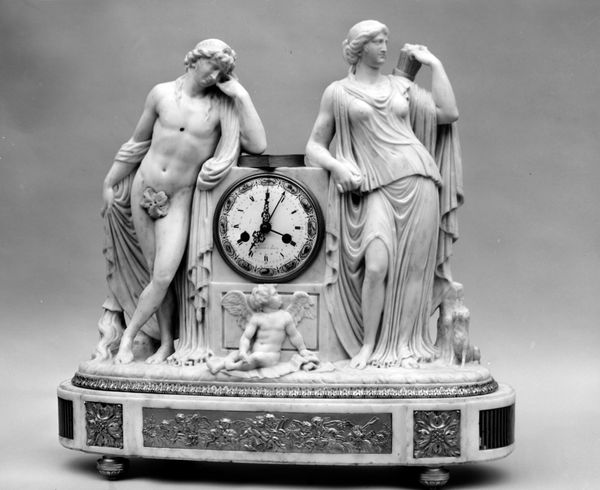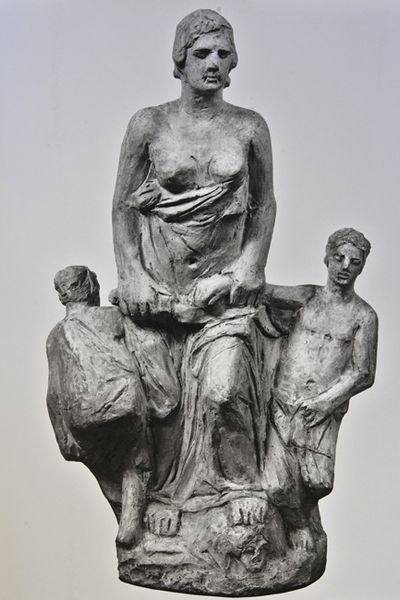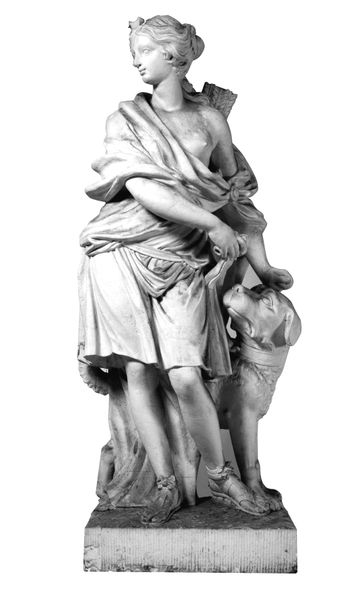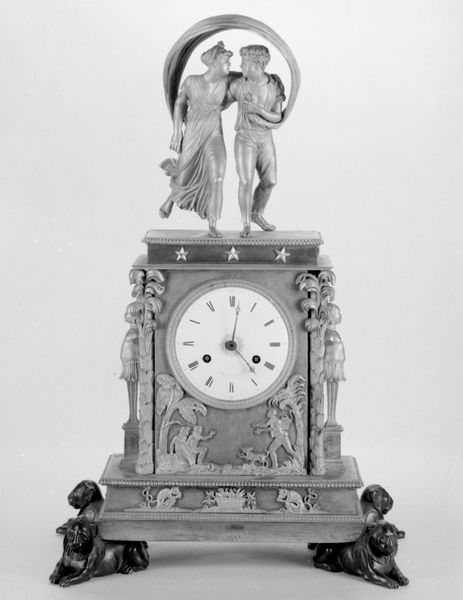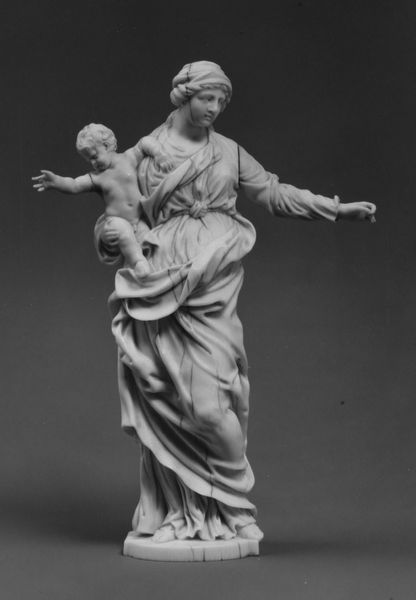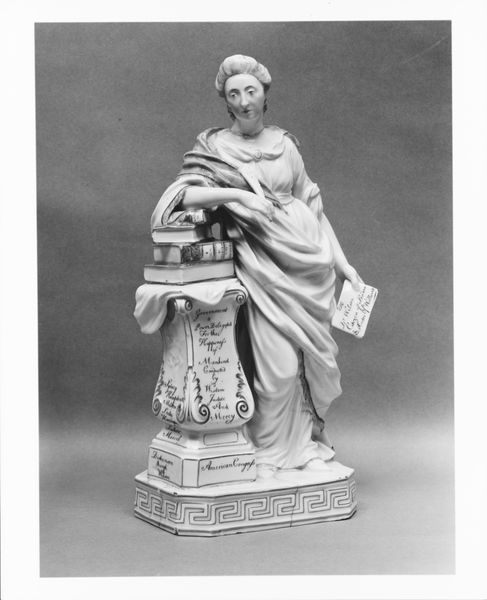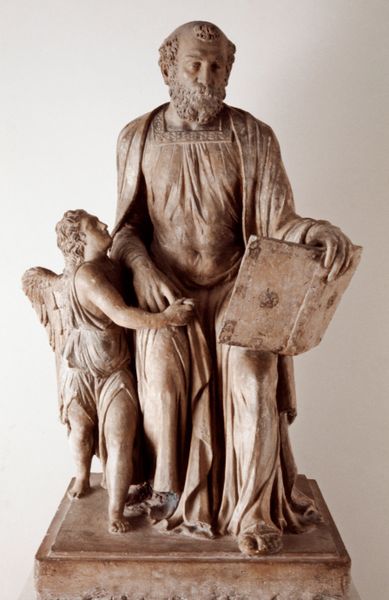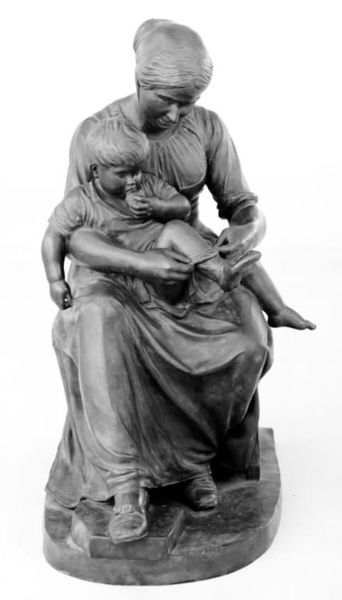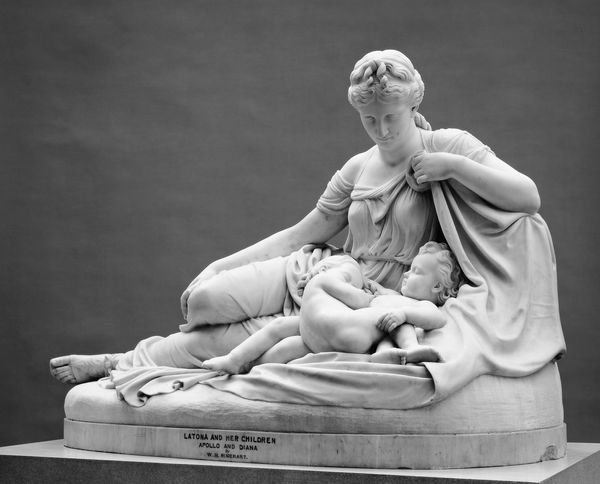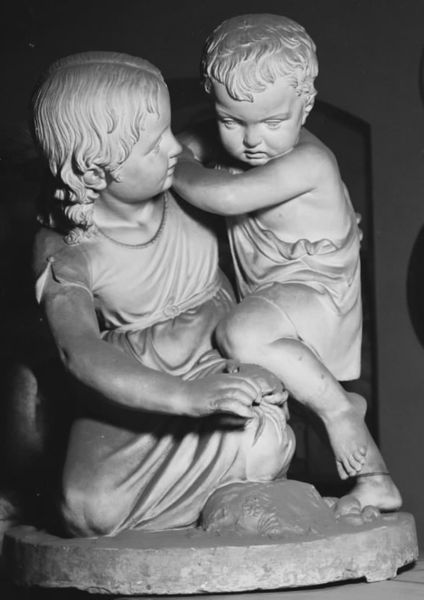
bronze, sculpture
#
portrait
#
allegory
#
sculpture
#
bronze
#
figuration
#
sculpture
#
decorative-art
#
rococo
Dimensions: Overall (confirmed): 24 3/4 × 19 1/4 × 10 1/4 in., 105 lb. (62.9 × 48.9 × 26 cm, 47.6 kg)
Copyright: Public Domain
Curator: Welcome. Let’s examine this intriguing Mantel clock, “Pendule Clio,” created between 1761 and 1775, by Jean-André Lepaute. Editor: My first impression is the striking contrast. A stoic, draped figure paired with an impish cherub—quite a dramatic composition! The bronze is masterfully worked, too, lending both heft and elegance. Curator: Absolutely. The "Pendule Clio" exemplifies the Rococo period's penchant for allegory. Clio, the muse of history, guides our understanding of time, indicated by her placement at the top of a clock seemingly fused with a globe. She appears, blindfolded, but with a stylus on the terrestrial world. Editor: Interesting to consider Clio is blindfolded while interacting with a physical object - are we to trust that time and historical accuracy do not go hand in hand? I’m struck by the tension between her stillness and the cupid's energy, the one at rest as the other leans forward. Visually, it makes the clock seem more alive. Curator: Exactly! These clocks served as status symbols within aristocratic homes and embody philosophical concepts about time, knowledge, and fortune. The presence of a Cupid suggests romantic associations and, maybe more significantly, immortality - as it implies unending and eternal. Lepaute cleverly combined artistry and engineering to please the elite circles. Editor: The way the sculptor has rendered drapery is amazing. Observe the cascade of fabric rippling as it is manipulated to amplify motion within inert bronze. It adds lightness. Also, have a look at the globe; with its intricate clock face bisecting its middle. Curator: Clocks such as these also had an important function within social rituals of the era, dictating the rhythm of social life. One must also consider the patron’s demands - what was their agenda for owning such an opulent piece? It offered a subtle, powerful pronouncement of their power and connections within society. Editor: Seeing this piece truly enlivens thinking about design. The convergence of allegory, aesthetic flair, and mechanical purpose showcases such inventive workmanship. It epitomises design from the Rococo era. Curator: Precisely. These objects offer a nuanced view of culture, innovation, and wealth during the 18th century.
Comments
No comments
Be the first to comment and join the conversation on the ultimate creative platform.

